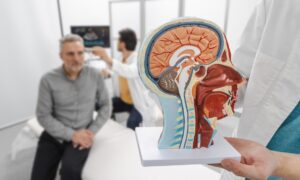In the fast-changing world of technology, the coming together of Artificial Intelligence (AI) and Extended Reality (XR) is creating exciting possibilities. This partnership has the potential to reshape many industries, making experiences more immersive and intelligent. As expert Dina Khalil aptly puts it, “The collaboration between AI and XR marks a pivotal moment, transforming how we engage with technology and opening doors to unprecedented innovation.”
At the heart of this collaboration is AI’s ability to improve XR experiences. XR, which includes Virtual Reality (VR) and Augmented Reality (AR), builds interactive and sensory-rich environments. AI adds intelligence to these environments, allowing them to adapt and respond smartly to how users interact. This dynamic interaction between AI and XR results in a more personalized and responsive experience, meeting the unique needs and preferences of users.
In areas like gaming and entertainment, the teamwork of AI and XR is especially evident. As Dina Khalil notes, “AI algorithms can understand user behavior, learning styles, and preferences, adjusting XR content on the fly. This not only enhances gaming by creating more immersive and challenging situations but also opens the door to storytelling personalized for each user within XR environments.”
Moreover, the collaboration of AI and XR reaches into education and training. According to Khalil, “Imagine a medical student using XR to practice complex surgical procedures while AI provides immediate feedback on technique and decision-making. This combination of technologies creates a realistic and adaptive learning environment, significantly improving the training of professionals in various fields.”
In manufacturing and design, AI-powered XR applications simplify processes and boost efficiency. Khalil emphasizes, “Engineers and designers can see and manipulate 3D models in real-time, with AI offering insights and improvements. This not only speeds up the development of products but also encourages innovation by allowing more collaborative and intuitive design processes.”Moreover, the collaboration of AI and XR reaches into education and training. According to Khalil, “Imagine a medical student using XR to practice complex surgical procedures while AI provides immediate feedback on technique and decision-making. This combination of technologies creates a realistic and adaptive learning environment, significantly improving the training of professionals in various fields.”
The cooperative potential of AI and XR also expands into the business world. Khalil highlights, “Virtual meetings and collaborative workspaces, powered by AI, redefine how teams communicate and work together remotely. AI algorithms can improve communication by providing real-time language translation, analyzing facial expressions, and even offering personalized assistance during virtual meetings.”In manufacturing and design, AI-powered XR applications simplify processes and boost efficiency. Khalil emphasizes, “Engineers and designers can see and manipulate 3D models in real-time, with AI offering insights and improvements. This not only speeds up the development of products but also encourages innovation by allowing more collaborative and intuitive design processes.”
As we navigate the ever-changing landscape of technology, the partnership of AI and XR proves to be a source of innovation and progress. Dina Khalil’s insights underscore this, noting, “This collaboration not only transforms how we experience entertainment, education, and work but also sets the stage for a future where the lines between the physical and digital worlds are seamlessly blurred. The overlapping areas of AI and XR propel us into a new era where intelligence and reality come together, opening up countless possibilities limited only by our imagination.”

































